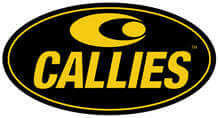
MS Access As A Dev Tool
Access continues to be a highly efficient tool for business database development.
Don't let a broken database ruin your business. We create custom Microsoft Access
databases, convert Excel to Access,
repair broken databases, and upgrade old Access
databases to the latest version. We work with Evansville, Indiana companies of all sizes
and industries. Call (323) 285-0939 now for a
FREE consultation.
The Best Microsoft Access Database Solutions owner, consultant, and principal programmer is Alison Balter - a recognized expert Microsoft Access consultant. Alison is the author of 15 Microsoft Access training books and videos. She is a frequent guest speaker at MS Access conferences and has developed hundreds of applications for businesses of all types.
We know your business data is important; we listen to your concerns, ask questions, and gather information from all stakeholders. We discuss your needs and requirements for your database. We find out what you want, why you need various features so we can obtain as much information as possible. Once we have the information we need, we work with you to design the proper database architecture, plus the dashboards, the questions (queries), forms, and reports you need for an excellent database system.


MS Access Solutions is a professional Microsoft Access programming firm. We work full time on Access projects. We are not a gig shop. Every deliverable is built by our in-house team, and we do not broker or subcontract your project. From first discovery through rollout and support, our team manages the work end to end so you know exactly who is building it.
We design, build, repair, and optimize Microsoft Access databases. To keep performance high, we pair an intuitive Access front end with SQL Server for the data layer, then tune tables, indexes, and queries for your workload. For example, we routinely support from 10 to 100 concurrent users, streamline tables with 300,000 to 1,000,000 rows, and add role based permissions plus audit trails so changes are tracked and recoverable when needed.
When you need the web, we build ASP.NET applications that connect to SQL Server. As a result, teams can search records, update transactions, and export reports from anywhere with sign in controls and row level access. On typical rollouts, common pages return results in under two seconds, and scheduled exports place clean data in Excel or Power BI without manual steps.
Clients choose us because we specialize in Microsoft Access programming as our core focus. We deliver practical, business-ready solutions for daily work and critical decisions. For example, a field service group with 22 users and 180,000 service tickets saw form load times drop from 8.0 seconds to 1.3 seconds after we optimized indexes and refined VBA event timing, and their month end reporting time fell from 6 hours to about 40 minutes.






Access continues to be a highly efficient tool for business database development.

How to create a Microsoft Access application with some unique tips and tricks.

Your Access developer near me has some great info for you about using Access efficiently.
Call MS Access Solutions at (323) 285-0939 for your FREE consultation.
The material below originally appeared in Alison Balter's book Mastering Microsoft Office Access 2007 Development and is reprinted here with the author's permission. There may be references to "Figures" or "Chapters" that are not reprintable and are not used on this page.
Just as there are several ways to move objects, you have several options for sizing objects. When you select an object, you can use each handle, except for the handle in the upperleft corner of the object, to size the object. The handles at the top and bottom of the object allow you to change the object's height, and the handles at the left and right of the object let you change the object's width. You can use the handles in the upper-right, lower-right, and lower-left corners of the object to change the width and height of the object simultaneously. To size an object, place your mouse pointer over a sizing handle, click, and drag. You can select several objects and size them all at once. Each of the selected objects increases or decreases in size by the same amount; their relative sizes stay intact.
Access offers several powerful methods of sizing multiple objects, found on the Arrange tab:
Probably the most confusing of the options is To Fit. This option is somewhat deceiving because it doesn't perfectly size text boxes to the text within them. In today's world of proportional fonts, you can't perfectly size a text box to the largest possible entry it contains. Generally, however, you can visually size text boxes to a sensible height and width. Use the field's Size property to limit what's typed in the text box. If the entry is too large to fit in the allocated space, the user can scroll to view the additional text. As the following Tip indicates, the To Fit option is much more appropriate for labels than it is for text boxes.
Access gives you excellent tools for spacing the objects on your form an equal distance from one another. Notice in Figure 5.14 that the ClientID, CompanyName, ContactFirstName, and ContactLastName text boxes aren't equally spaced vertically from one another. To make the vertical distance between selected objects equal, choose the Make Vertical Spacing Equal tool in the Position group of the Arrange tab. In Figure 5.15, you can see the result of using this command on the selected objects in Figure 5.14.
You can make the horizontal distance between objects equal by using the Make Horizontal Spacing Equal tool in the Position group of the Arrange tab. Other related commands that are useful are Increase Vertical Spacing, Increase Horizontal Spacing, Decrease Vertical Spacing, and Decrease Horizontal Spacing, all available in the Position group on the Arrange tab. These commands maintain the relationship between objects while proportionally increasing or decreasing the distance between them.
The preceding information originally appeared in Alison Balter's book Mastering Microsoft Office Access 2007 Development and is reprinted here with the author's permission.
When you need a Microsoft Access programmer for your Evansville, Indiana business, organization, or agency, call MS Access Solutions at (323) 285-0939. We have over 25 years experience as a Microsoft Access programmer, developer, and consultant. We create Access database applications for all industries, including (but not limited to . . .) hospitals and medical cenrers, government agencies at the city, state and federal level, the U.S. military, school disricts, junior colleges, universities, agriculture and horticultural, chiropractors, dentists, human resources departments, employment agencies, oil and gas companies,and insurance agencies and insurance corporations.
We specialize in advanced Microsoft Access and SQL Server database programming for businesses of all sizes. Whether you need a custom solution or repairs on an existing database, we provide expert development, troubleshooting, and optimization.
Find out more about our Access programming services on the Microsoft Access Programmer Fort Wayne, Indiana web page.
Answer: Yes, MS Access databases can experience performance issues over time. The most common causes are inefficient queries, unoptimized indexes, or a bloated database. At MS Access Solutions, we optimize your database by creating efficient queries, adding necessary indexes, and performing regular maintenance. By doing so, we can dramatically improve the performance of your database, ensuring that your business operates smoothly. If you’re experiencing lag, contact us for a thorough evaluation.
Answer: Yes, we specialize in migrating databases from MS Access to SQL Server. This process allows for greater scalability, improved performance, and better support for large datasets. Our team will guide you through every step, from preparing the data for migration to ensuring a smooth transition with no data loss. After migration, we optimize your SQL Server environment for the best performance. Reach out to us for a free consultation on how we can assist with your migration needs.
Answer: Yes, broken Access forms can disrupt your workflow. This often happens due to missing or corrupted data, incorrect field settings, or compatibility issues after an update. Our team specializes in diagnosing and repairing these issues by restoring form functionality, repairing data integrity, and ensuring that your forms align with your business needs. We will guide you through a quick fix or a more extensive rebuild, depending on the issue. Call us today for assistance!
Answer: Yes, integrating Excel with MS Access is an effective way to manage data more efficiently. Many businesses face challenges with large, disconnected Excel files, leading to data redundancy and errors. At MS Access Solutions, we specialize in converting Excel data into a more structured and accessible MS Access format. This integration ensures better data management, reduces human error, and enhances reporting. We’ll help you streamline your workflows. Let’s talk about your Excel-to-Access needs today!
Answer: Yes, database security is crucial for protecting sensitive business information. MS Access databases often lack robust security features, making them vulnerable to unauthorized access. We implement security measures like user-level permissions, encrypted data, and regular backups to ensure your database remains secure. Additionally, we can help you maintain an audit trail to monitor any changes to critical data. Secure your database today with our expert services and let us ensure your data is protected.

